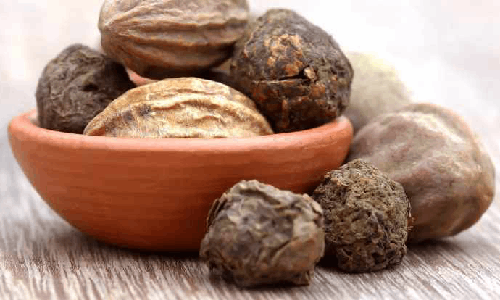In the hustle and bustle of modern life, the simple act of eating has become a mindless routine for many of us. We often grab a quick bite on the go, scarcely pausing to savour the flavors or consider the nutritional value of what we consume. However, Ayurveda recognizes food as not only nourishment for the body but also for healing and hence, emphasises on mindful eating, As an Ayurvedic doctor, 80% of my treatment involves food as medicine. The diet plan I make for each of my patients is not just about how it aligns with their Prakriti, Dosha dominance and health conditions. It is also about mindfulness. Mindful eating requires you to think about the food you consume and make healthy decisions based on what your body needs and how fulfilled you feel after eating. People need to be more mindful of their dietary choices, as over 50 % of the global population is overweight. In this blog, we delve into the art of mindful eating with Ayurveda, exploring how it can lead to healthier eating habits, improved gut health, and enhanced digestion. Understanding Mindful Eating with Ayurveda Central to Ayurvedic philosophy is the belief that the mind, body and spirit are interconnected. Therefore, maintaining balance among these elements is essential for overall well-being. Mindful eating is an integral aspect of Ayurveda. It emphasises the importance of being present and fully engaged in the process of nourishing oneself. Ayurveda and mindful eating underscore the importance of savouring food for overall mental and digestive well-being. According to Ayurveda, food is essential for nourishing the holistic well-being of the mind, body and spirit, not just for mere survival. Being consciously aware of what you consume and relishing the flavours and scents of your meal is essential to mindful eating. Healthy Eating Habits: The Ayurvedic Perspective According to Ayurveda, aligning our diet with our Prakriti is key to maintaining balance and promoting optimal health. For instance, those with a predominant Vata constitution may benefit from warm, grounding foods that help to alleviate Vata’s cold and airy qualities. Pitta types, on the other hand, may thrive on cooling, hydrating foods that balance Pitta’s fiery nature. Kapha individuals may find support in lighter, stimulating foods to counterbalance Kapha’s heavy and stagnant tendencies. By understanding our constitution and selecting foods that harmonise with it, we can cultivate healthier eating habits that promote balance and vitality. Ayurvedic Food for Gut Health In Ayurveda, the digestive fire or Agni is considered the cornerstone of health. Your Agni should be balanced for efficient digestion and assimilation of nutrients. A low Agni or poor gut health is the root cause of all diseases. It can lead to digestive discomfort, nutrient deficiencies and the accumulation of toxins (Ama) in the body. An Ayurvedic diet, therefore, offers a treasure trove of foods and spices that, in turn, support digestive health. Warm, cooked foods are generally preferred over raw or cold foods. They are easier to digest and help stoke the digestive fire. Incorporating spices such as ginger, cumin, coriander, and turmeric can further enhance digestion and reduce digestive woes. Additionally, Ayurveda emphasises the importance of mindful eating practices, such as chewing food thoroughly, eating in a calm and relaxed environment, and avoiding distractions while eating. These simple yet profound practices can help improve gut health and optimise digestion. The Role of Mindfulness in Digestion In today’s fast-paced world, many of us eat on autopilot, scarcely registering the tastes, textures, and aromas of our meals. However, Ayurveda teaches us that digestion begins the moment food enters our mouths, as the act of chewing stimulates the release of digestive enzymes and prepares the body for assimilation. Mindful eating encourages us to slow down and savour each bite, paying attention to the sensory experience of eating. By cultivating mindfulness at the table, we can enhance our body’s ability to digest and metabolise nutrients effectively. And the best part is you have control over your food portions that you consume. Practical Tips for Mindful Eating with Ayurveda Begin each meal with a moment of gratitude, acknowledging the sources of your food and the efforts that went into its preparation. Take a few deep breaths before eating to centre yourself and shift into a state of relaxation. Chew each mouthful thoroughly, aiming for at least 20-30 chews per bite to aid digestion. Eat in a calm, distraction-free environment, free from electronic devices or other distractions. Listen to your body’s hunger and satiety cues, eating until you feel comfortably satisfied rather than overly full. Cultivating Awareness of Food Effects According to Ayurveda, the food we ingest plays a significant role in influencing our mind and body. Understanding the potential effects of different foods on your health is essential. Mindful eating involves being fully aware of how the food you consume impacts your body’s energy levels, emotional state, and overall well-being. Understanding the impact of various foods on your body can help you make informed decisions about your diet. This, in turn, can assist in maintaining equilibrium between your body and mind; consequently, it increases energy levels. It also aligns with the principles of Ayurveda, which emphasise individualised nutrition and holistic well-being. Practising Gratitude and Connection Ayurveda and mindful eating promote acknowledging and appreciating the nourishment food provides and maintaining a connection to it for vitality and wellness. Feeling appreciative of the food we possess and recognizing our interconnectedness fosters reverence and appreciation for nature’s blessings. Practising healthy eating habits involves being conscious and respectful of the food we consume, as well as participating in meal preparation and sharing meals with others. This improves our sense of being linked and content. Conclusion In a world filled with fad diets and conflicting nutritional advice, Ayurveda offers a refreshing perspective on food and eating. By embracing mindful eating practices, we can cultivate healthier eating habits, improve gut health, and enhance digestion. Let… Continue reading What is Mindful Eating?
What is Mindful Eating?

